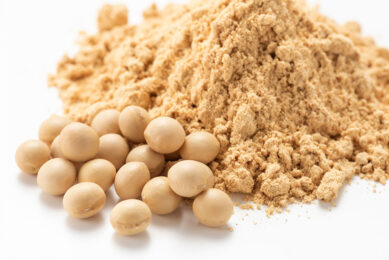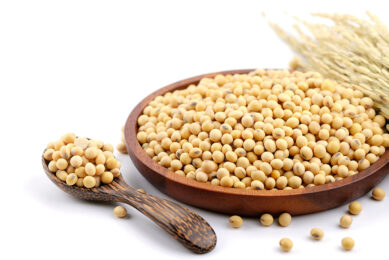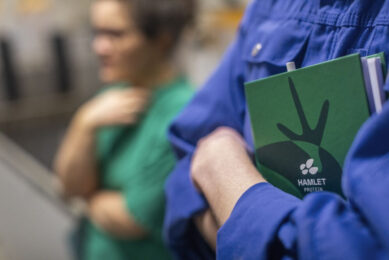EU remains in limbo about GM crops

Seven countries in the European Union commercially produce genetically modified crops. Spain is by far the largest producer. Five countries continue to maintain national bans. At the same time, the EU is a major importer of GM-products. This complex situation continued throughout 2008.
By Dick Ziggers
Under the EU policy framework for agricultural biotechnology, the policies between member states vary greatly.
Most EU member states have set up national coexistence frameworks for biotech and non-biotech crops (Belgium, Czech Republic, Germany, Hungary, Portugal, Romania, Slovakia) or are currently preparing coexistence rules (France, Spain, the United Kingdom). Five countries continue to maintain national bans (Austria, France, Greece, Hungary and Italy). However, the EU is a major consumer of biotech products, mainly soybean meal imported to feed livestock and poultry. At least 80% of EU soy crush is estimated to be genetically engineered. Finally, agricultural biotechnology research in Europe is declining, mainly due to political pressure, according to a US Department of Agriculture attaché report posted on the Foreign Agricultural Services website. (www.fas.usda.gov/gainfiles/200811/146306614.pdf)
EU biotech area gradually expands
Since the approval of the first biotech corn event for planting in the EU, Spain is the country that has most rapidly adopted its use. Prior to its accession to the EU, Romania was a major producer of biotech soybeans. However, since biotech soybeans are not approved for planting in the EU, this ended in 2007 on EU accession. Interest across EU farming groups in the use of agricultural biotechnology continues to expand, particularly as input costs are increasing. This has made the yield benefits and cost saving especially attractive. As a result, the area devoted to biotech crops (currently only one corn event) continues to expand gradually. However, many growers are constrained by restrictions placed in land rental contracts, threats by neighbours, and intimidation by NGO’s. See Table 1 for biotech crop production in EU member states in 2007 and 2008. In several EU member states (Austria, the Czech Republic, France, Germany, Greece and Romania), farmers producing biotech corn must register their fields with government bodies. The specificity of these registration requirements varies greatly from country to country.
EU major GMO consumer
The main biotech products used in each EU country are in animal feed, human food, planting seeds, and the textile industry. They consist of soybeans and products, corn and its derivatives, and cotton. The largest category of GM products consumed is soybean meal, which is used in animal feed. The EU- 27 roughly uses 33 million tonnes of soybean meal annually in animal feed. The bulk of the soybean meal consumed is imported or produced from imported soybeans, mainly coming from North and South America. GM products are estimated to represent 80 to 95% of the total soybean meal used by EU countries, i.e., 26 to 31 million tonnes. Similarly, the EU-27 crushes approximately 14 million tonnes of soybeans annually, and at least 80% is estimated to be GM products, i.e., 11 million tonnes.
However, there is a niche market for non-GM soybeans and soybean meal used in animal feed, mainly for the poultry sector and other animal production undertaken under the Identity Preservation programme or geographical indications, or for human consumption for soybeans (such as in baby food). Corn and corn products (mainly corn gluten feed) represent the second largest category of GM products used in animal feed. However, the share of GM products out of total corn consumption is significantly lower (10-25%) than for soybean products. The EU-27 does not rely as much on imports of corn and corn-derived products as for soybean products.
Research in decline
Research into agricultural biotechnology is a stated priority of the European Commission and many of the EU-27. However in reality, many research scientists have either been forced to drop activities due to political pressure or have moved to institutions (particularly in the United States) where support for such research is undeterred.
This reduction in research activities has also translated into a reduction in the operation of field trials. For several years, researchers and universities were able to implement field trial activities successfully. However, beginning in 2007, activist groups succeeded in intimidating many research stations and universities into dropping field trial work. As a result, the requests for permits to conduct field trials fell dramatically in 2008 (Table 2). Field trial destructions have continued with little or no response from police and judicial authorities in many areas.
Strong regulation
Europe’s regulatory framework for biotechnology is strongly regulated through several Council Directives (90/220/EEC, 90/219./EEC, 2001/18/EC) The latter is implemented in each member state’s national legislation. The Directive sets out procedural guidelines for experimental field trials and commercial introduction into the market.
Specific measures include:
• Environmental risk assessment,
• Mandatory post-market (environmental) monitoring,
• Mandatory supply of information to the public,
• Mandatory labelling and traceability at all stages of placing on the market, and
• The establishment of a molecular register.
Authorisations, which can be renewed, are granted for a maximum period of ten years starting from the date when the authorisation is first issued. If a GM product reaches the EU market, the applicant is obliged to ensure that post-market monitoring and reporting is carried out according to the conditions specified in the authorisation.
Additional directives regulate research and industrial work involving the contained use of genetically engineered micro-organisms. In addition to these directives, there is a series of EU regulations which govern the approval and use of genetically modified products.
Source: Feed Tech magazine Volume 13. No. 2











